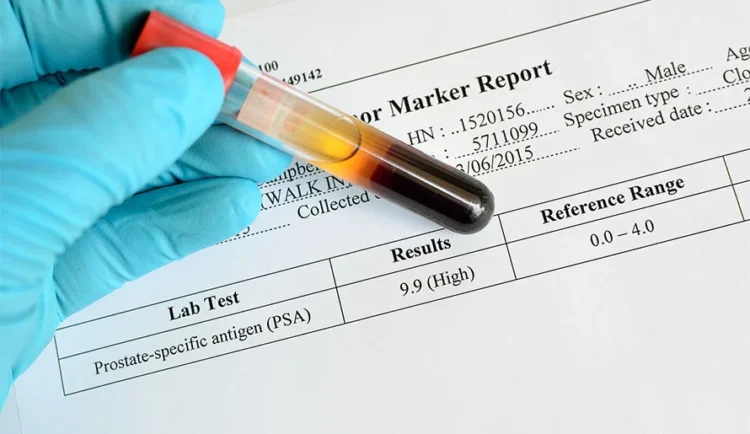Prostate-specific antigen (PSA) is a protein produced by both normal and cancerous cells in the prostate gland. Measuring PSA levels through a simple blood test has become a vital tool for early detection and monitoring of prostate health, particularly for identifying potential prostate cancer. However, interpreting PSA numbers isn’t always straightforward. Understanding what these levels mean can help demystify the test and empower men to make informed decisions about their health.
What is PSA?

PSA is naturally present in the blood and plays a role in semen production. While small amounts of PSA are normal, higher-than-expected levels can indicate issues with the prostate, including:
- Benign prostatic hyperplasia (BPH): Non-cancerous enlargement of the prostate.
- Prostatitis: Inflammation or infection of the prostate gland.
- Prostate cancer: Elevated PSA can sometimes be a sign of cancer.
However, elevated PSA levels don’t automatically mean cancer. Various factors, including age, medications, or recent physical activity, can influence PSA levels.
What is Considered a Normal PSA Level?
Normal PSA levels vary depending on factors like age and overall health. While there is no definitive “normal” number, doctors often use general ranges to assess risk:
- Men in their 40s: PSA levels below 2.5 ng/mL are typically considered normal.
- Men in their 50s and 60s: PSA levels below 3.5 ng/mL are often regarded as normal.
- Men in their 70s and older: PSA levels below 4.5 ng/mL are generally considered normal.
It’s important to note that these are guidelines, not absolutes. A prostate cancer specialist may interpret results in the context of an individual’s medical history, family history, and other diagnostic tests.
What Do High PSA Levels Mean?

Elevated PSA levels don’t always point to cancer. Other conditions can also cause an increase, such as:
- Benign Prostatic Hyperplasia (BPH):
BPH, or prostate enlargement, is common in older men and can raise PSA levels without being cancerous. - Prostatitis:
Infections or inflammation in the prostate can temporarily spike PSA levels. - Physical Factors:
Recent ejaculation, vigorous exercise (such as cycling), or a digital rectal exam (DRE) can cause a temporary rise in PSA. - Prostate Cancer:
While elevated PSA levels can be an indicator of prostate cancer, they don’t confirm it. Further diagnostic tests, such as imaging or a biopsy, are often needed to confirm a cancer diagnosis.
How is PSA Used in Prostate Cancer Screening?
PSA testing is a valuable tool in prostate cancer detection, especially when used alongside other methods like digital rectal exams. Here’s how PSA is commonly utilized:
- Baseline Screening:
For men over 50—or those over 40 with a family history of prostate cancer—a baseline PSA test helps establish a starting point for future comparisons. - Monitoring Trends:
It’s not just the PSA number that matters but how it changes over time. A rapidly rising PSA level (known as PSA velocity) may raise concern, even if the levels are within the normal range. - Risk Assessment:
PSA results are combined with other factors, such as age, family history, and overall health, to determine whether further tests or interventions are needed.
When Should You Be Concerned?

While a high PSA level can be concerning, it’s important not to panic. A prostate cancer specialist will evaluate your results within the broader context of your health. Key factors they may consider include:
- PSA Density: The PSA level relative to the size of the prostate.
- PSA Velocity: How quickly PSA levels are increasing over time.
- Free vs. Bound PSA: Measuring the ratio of free PSA (unattached in the blood) to bound PSA can provide additional insights. Lower levels of free PSA may be associated with a higher risk of prostate cancer.
If PSA levels are elevated, a doctor may recommend additional tests, such as:
- Repeat PSA Testing: To confirm the initial results.
- Imaging Tests: Like MRI or ultrasound, to examine the prostate.
- Biopsy: To definitively diagnose or rule out prostate cancer.
The Importance of Individualized Care
One of the challenges with PSA testing is its potential for false positives (elevated PSA without cancer) and false negatives (normal PSA with cancer). This is why PSA levels should never be interpreted in isolation. Consulting a prostate cancer specialist or a doctor experienced in radiation oncology can help ensure accurate interpretation and appropriate follow-up care.
For men diagnosed with prostate cancer, PSA testing also becomes an essential tool for monitoring treatment effectiveness and detecting potential recurrences.
Staying Proactive About Prostate Health

The key to managing PSA levels and maintaining prostate health is staying proactive. Here are a few steps men can take:
- Regular Check-ups:
Talk to your doctor about when to begin PSA testing based on your age, risk factors, and family history. - Healthy Lifestyle Choices:
Eating a balanced diet rich in fruits, vegetables, and whole grains, staying active, and maintaining a healthy weight can support overall prostate health. - Open Communication:
Don’t hesitate to discuss concerns or symptoms, such as urinary changes or pelvic discomfort, with your healthcare provider.
Conclusion
PSA testing is a valuable tool in the early detection and management of prostate health issues, including prostate cancer. While interpreting PSA levels can sometimes be complex, understanding the numbers and their context is a critical step toward informed decision-making.
For men with elevated PSA levels, working with a prostate cancer specialist ensures a comprehensive approach to diagnosis and care. Whether it’s through advanced diagnostic tools, radiotherapy, or other cutting-edge treatments in radiation oncology, staying proactive about PSA levels can make all the difference in achieving better health outcomes.
 Hi Boox Popular Magazine 2024
Hi Boox Popular Magazine 2024



